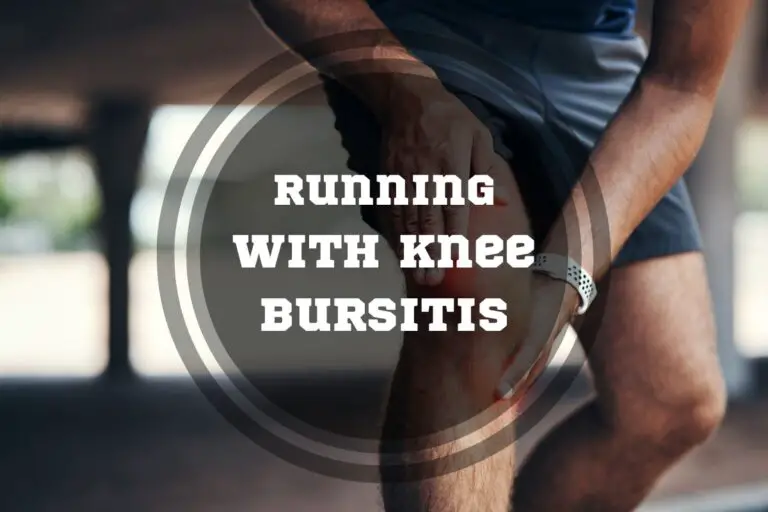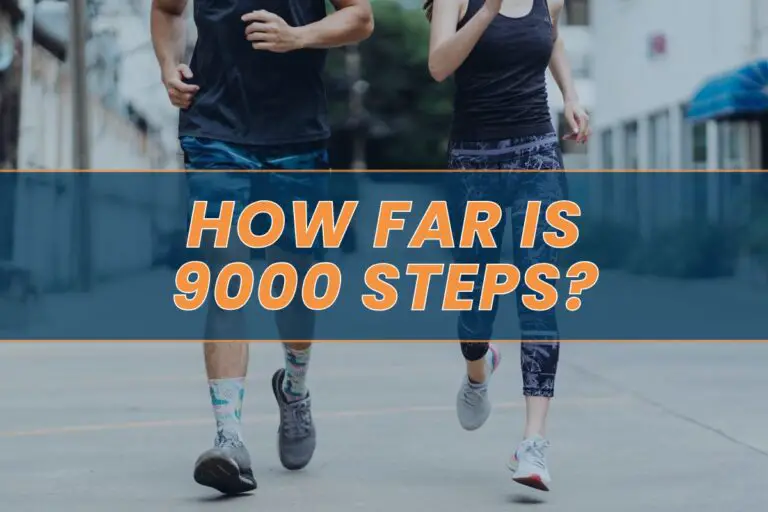Does Running Tone Your Legs? Tips, Exercises, and Running Techniques For Slim Legs
Running is a great form of exercise that can help you achieve your fitness goals. Here is one of the most common questions people have about running – “Does running tone your legs?” The answer is yes! Running is an excellent way to tone your legs as it engages several muscle groups, including your quadriceps, hamstrings, and calves.
Is running a good leg workout? You need to know many details to get your legs in the best shape. Let’s discuss everything together!
Running is one of the best exercises to tone your legs. It can help to build lean muscle and burn fat, resulting in more defined and sculpted runners’ legs. Running also helps to improve circulation, which can tone your leg skin during weight loss.
What Does Running Do to Your Body?
Running is one of the most popular forms of exercise around the world. It is a great cardiovascular workout that can help you maintain a healthy weight, reduce stress, and improve your overall health. But have you ever wondered what running does to your body and will running tone your legs? Let’s discuss the different parts of the body that are affected by running, what leg muscles work during running, and whether it affects the body of men and women equally.
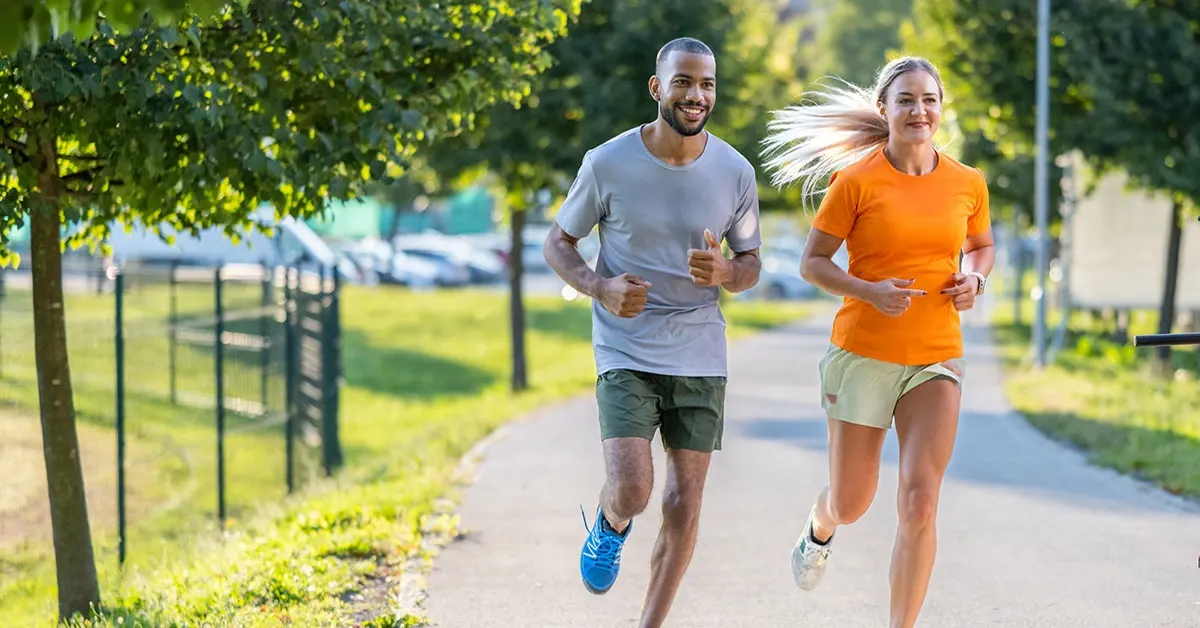
The Parts of the Body Affected by Running
Does running tone your body? Running is a full-body workout that engages different parts of the body. When you run, your heart and lungs work together to pump oxygen and blood to your muscles, which helps to improve your cardiovascular health. Running also helps to strengthen your bones, muscles, and joints. It can help to build strong leg muscles, toned abs, and a strong back. Running regularly can also help to reduce the risk of chronic diseases such as heart disease, type 2 diabetes, and even some kinds of cancer.
Does Running Affect the Body of Men and Women Equally?
Running can affect the body differently depending on whether you are male or female. Men generally have more muscle mass and less body fat than women, making it easier to build and maintain muscle through running. Conversely, women may need to work harder to build and maintain muscle mass. Women are also more prone to injuries such as stress fractures, which the repetitive impact of running can cause. However, running can benefit both men and women in weight loss, cardiovascular health, and overall fitness.
What Does It Mean to Tone Your Legs, and What Muscles Work While Running?
Toning your legs is a common fitness goal for many people. But what does it mean to “tone” your legs? In simple terms, toning refers to reducing body fat and building lean muscle mass, resulting in a more defined and sculpted appearance. Let’s discuss in more detail what leg toning entails and the leg muscles that come into play during running.
Toning your legs involves reducing excess body fat, which is achieved through a combination of cardiovascular exercise and strength training.
Pro Tip:
Cardiovascular exercises like running, cycling and swimming help burn calories and fat, while strength training activities like squats, lunges, and leg presses help build lean muscle mass. By combining cardio and strength training, you’ll be able to achieve a more toned and defined lower body.
Leg Muscles That Work While Running
Does running build leg muscle? Running targets various leg muscles. Some of the leg muscles that come into play during running include:
1. Glutes
The glutes, also known as the buttocks, are one of the largest muscles in the body. They are responsible for hip extension, which is critical for running. The glutes work in tandem with the hamstrings to propel the body forward. Strong glutes are essential for runners to prevent lower back pain and improve overall performance.
2. Quadriceps
The quadriceps are a group of four muscles located in the front of the thigh. These muscles are responsible for extending the knee and maintaining balance during running. Strong quads help improve running speed and endurance.
3. Hamstrings
The hamstrings are a group of three muscles in the back of the thigh. These muscles are responsible for flexing the knee and extending the hip. Strong hamstrings help improve running speed and prevent injuries.
4. Calves
The calves help improve running speed and reduce the risk of shin splints. They are located at the back of the lower leg and consist of two muscles: the gastrocnemius and the soleus. These muscles are responsible for plantar flexion, which is the upward movement of the foot.
3 Benefits of Leg Toning for Runners
Now that you know what muscles running tones, let’s discuss how running makes your legs look better, whether running is a good leg workout, and the benefits of running for leg toning.
Pro Tip:
When you run, you engage your glutes, quads, hamstrings, and calves, which are the main muscles in your legs. Running also helps burn calories, which can help reduce the amount of fat in your legs. This combination of muscle toning and fat burning can help make your legs look better.
Does running tone your thighs? Running is a great leg workout. The repetitive motion of running can help strengthen and tone your leg muscles. The more you run, the more your muscles will adapt to the stress of running, making them stronger and more toned.
Benefits of running for leg toning:
1. Burns Calories
Running is a great way to burn calories, which can help reduce the amount of fat in your legs. The more you run, the more calories you will burn, which can help you achieve your leg toning goals.
2. Builds Endurance
Running can help you build endurance, which can help you perform other activities that require leg strength and endurance, such as hiking, biking, or swimming.
3. Tones Muscles
Running can help tone your leg muscles, including glutes, quads, hamstrings, and calves. The repetitive running motion can help boost and tone these muscles, making them stronger and more defined.
Is There a Negative Impact of Running on the Legs?
Some people may wonder if there are any harmful impacts of running on the legs. Let’s discuss three potential negative effects of running on the legs.
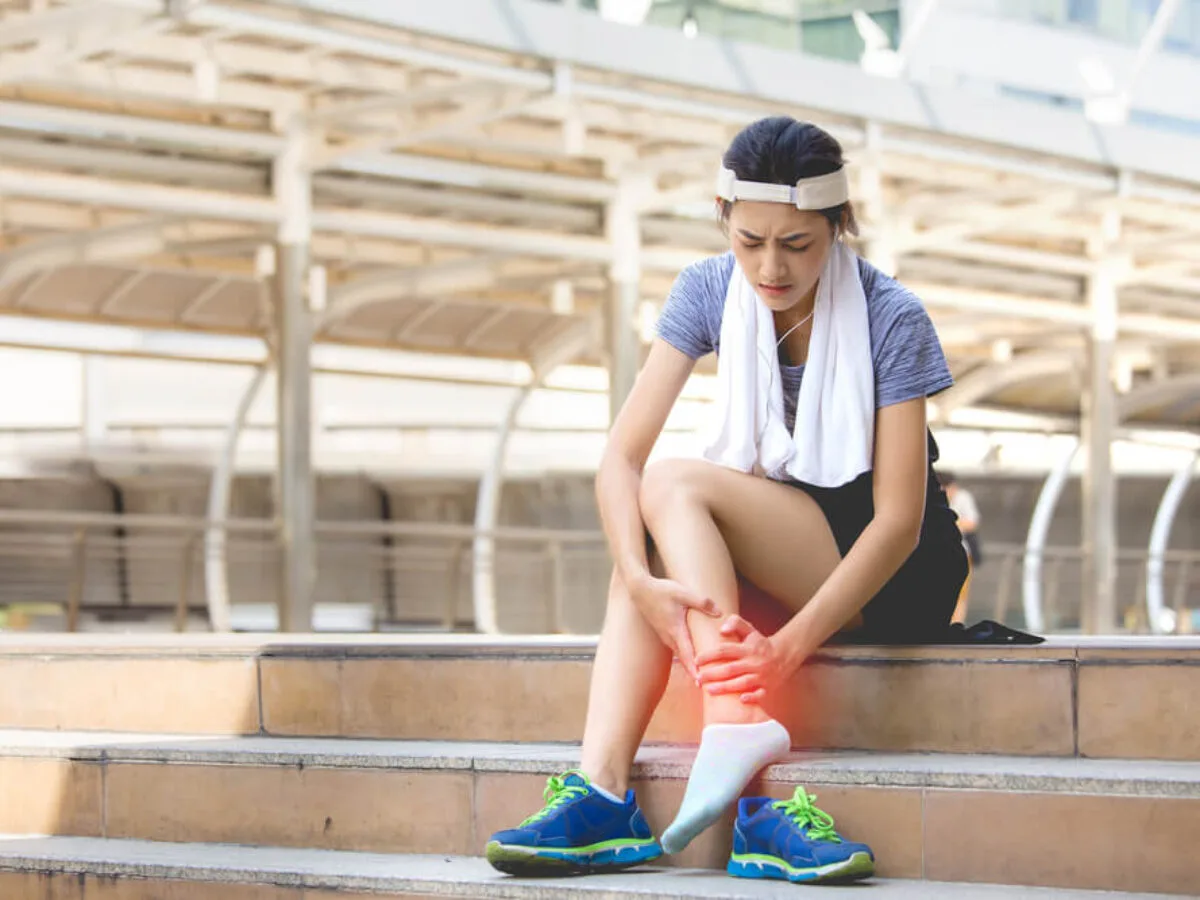
1. Knee Injuries
Knee injuries are among the most common negative consequences of running on the legs. Running is a high-impact activity that puts a lot of stress on the knees, leading to pain and injury. Knee injuries like patellofemoral pain syndrome, iliotibial band syndrome, and meniscus tears are common among runners. These injuries can be caused by overuse, poor running form, or improper footwear. To prevent knee injuries, it is important to stretch before and after running, wear proper shoes, and gradually increase the intensity and duration of your runs.
2. Shin Splints
Another potential negative impact of running on the legs is shin splints. Shin splints are a common overuse injury that causes pain along the shinbone. They are often caused by repetitive stress on the legs, which can occur during running. Shin splints can be prevented by wearing proper shoes, stretching before and after running, and gradually increasing the intensity of your runs. If you experience shin splints, it is important to rest and allow your legs to recover before resuming your running routine.
3. Stress Fractures
Stress fractures are another potential negative impact of running on the legs. These are small cracks in the bones that are often caused by repetitive stress on the legs. They are common among runners and can be caused by overuse, poor running form, or improper footwear. To prevent stress fractures, wear proper shoes, and rest if you experience pain or discomfort in your legs.
4 Ways to Reduce the Risk of Injury
To reduce the risk of injury while running, there are several steps that you can take:
- Make sure that you have proper running shoes that provide adequate support and cushioning.
- Focus on maintaining good running form, which includes landing on the midfoot rather than the heel, keeping your knees slightly bent, and maintaining an upright posture.
- Vary your running surfaces and routes to reduce the impact on your legs.
- Be sure to stretch before and after each run to help prevent injuries.
Subscribe to Our Running Newsletter!
Get free running tips from renowned professional athletes and discounts from top-notch brands.
5 Best Exercises to Tone Your Legs While Running
If you want to see the result of flabby legs to toned legs before and after, incorporating these exercises into your running routine can help.
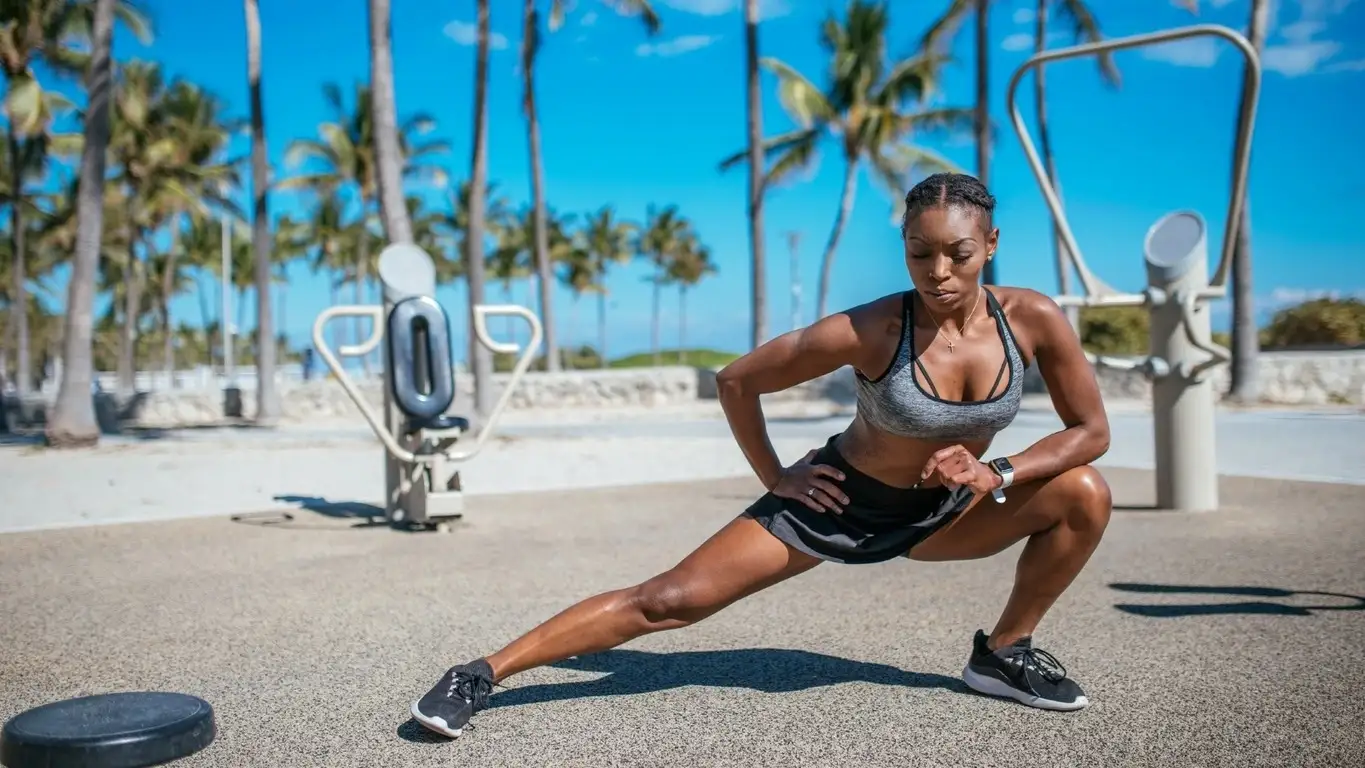
1. Squats
Squats are a classic exercise that can help tone your legs. They primarily target your glutes, quads, and hamstrings. To do a squat, stand with your feet shoulder-width apart and lower your body by bending your knees and pushing your hips back. Make sure to keep your back straight and your weight in your heels. Aim for three sets of 10-15 reps.
2. Lunges
Lunges are another great exercise for toning your legs. They also primarily target your quads, hamstrings, and glutes. To make a lunge, take a step forward with one foot and lower your body by bending your knees. Keep your front knee directly above your ankle and your back knee off the ground. Alternate legs and aim for three sets of 10-15 reps.
3. Calf Raises
Calf raises are a great exercise to target your calf muscles. Stand on the edge of a step or curb with your heels hanging off to do a calf raise. Slowly rise onto your toes, then lower back down. Aim for three sets of 15-20 reps.
4. High Knees
High knees are a great activity to help tone your legs and improve your running form. To do a high knee, stand with your feet hip-width apart and bring your knees up to your chest one at a time. Alternate legs and aim for three sets of 20-30 reps.
5. Jump Squats
Jump squats are an advanced exercise that can help tone your legs and improve your explosive power. To do a jump squat, start in a squat position and then explosively jump up, reaching your arms overhead. Land softly and immediately go back into a squat position. Aim for three sets of 8-10 reps.
5 Tips to Improve Leg Toning for Runners?
Not all running techniques are created equal for toning your legs. Let’s discuss five running techniques that are particularly effective for toning your legs and how they affect the muscles.
1. High-Intensity Interval Training (HIIT)
High-intensity interval training (HIIT) is a running technique involving short bursts of intense running followed by rest periods. This technique is particularly effective for toning your legs because it engages your fast-twitch muscle fibers. These muscle fibers are responsible for explosive movements and are most effectively targeted through high-intensity exercises like HIIT running. It also burns more calories than traditional steady-state running, which can help you shed fat from your legs.
2. Hill Running
Hill running is another effective running technique for toning your legs. Running uphill engages your glutes, hamstrings, and calves more than running on a flat surface. Hill running also helps to build endurance and can improve your running form. Running downhill also has benefits for toning your legs. It engages your quadriceps and helps to build strength and power in your legs. Hill running is a challenging technique, but it can be a great way to take your running to the next level.
3. Sprints
Sprints are another high-intensity running technique that is great for shaping your legs. Sprinting engages your fast-twitch muscle fibers and burns more calories than steady-state running. It is also an effective way to build power and speed in your legs. Sprints can be made on a track, a treadmill, or outside. They can be incorporated into your running routine as intervals or as a standalone workout.
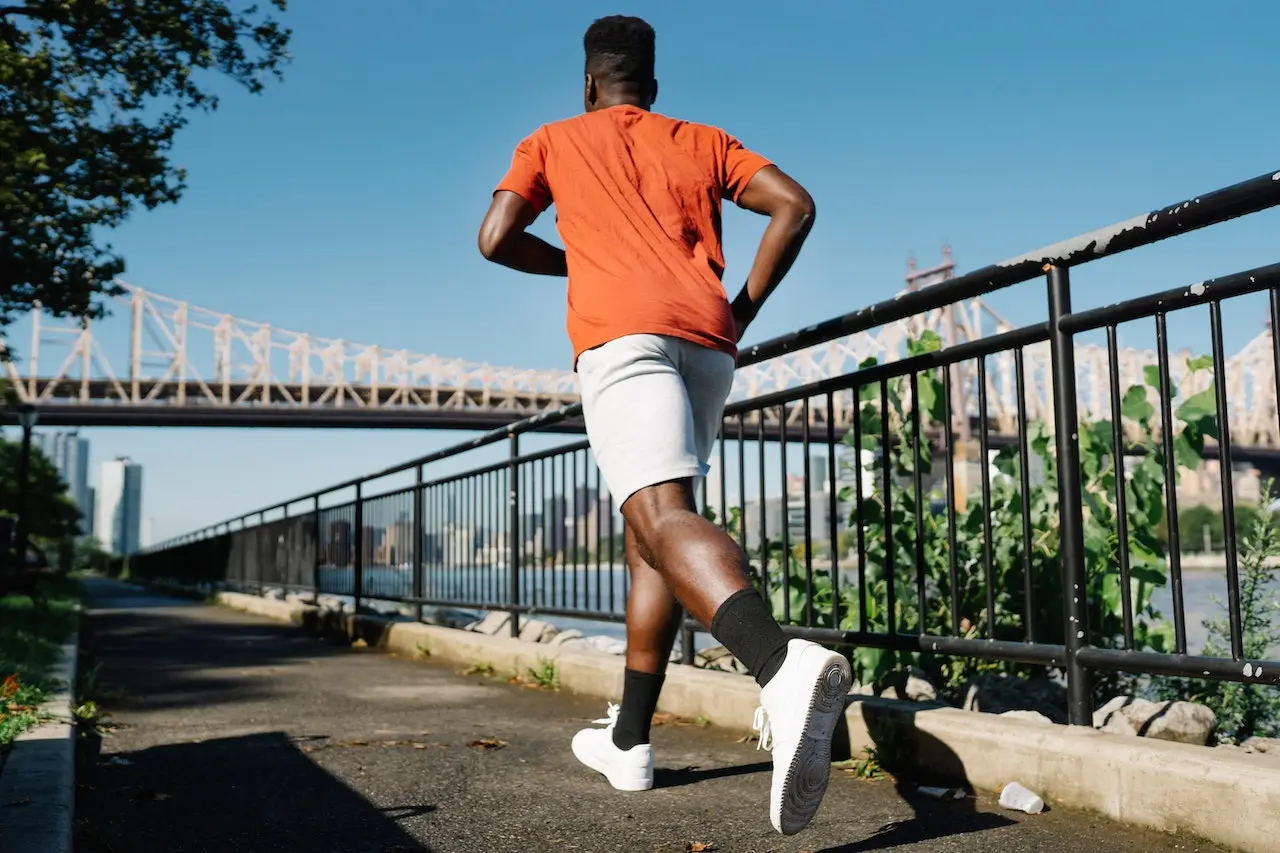
4. Fartlek Training
Fartlek training is a running technique that alternates between high-intensity running periods and rest or low-intensity running. This technique is great for boosting your legs because it engages your fast-twitch muscle fibers while providing rest periods for healthy recovery. Fartlek training can be done in various ways, such as running fast for a short period and then jogging or walking for a set amount of time. This technique is great for beginners looking to improve their running endurance and tone their legs.
5. Long-Distance Running
Long-distance running is a steady-state running technique that involves running at a moderate pace for an extended period. It also engages your slow-twitch muscle fibers responsible for endurance activities. It also burns calories and can help you lose weight, leading to toned legs. While this technique may not be as effective for toning your legs as the high-intensity techniques discussed above, it is still a great way to improve endurance and overall fitness.
Comparison of Different Leg-Toning Sports
Let’s compare three various and contrast the three leg toning effects of different sports:
1. Runners Legs vs. Lifting Legs
Running and lifting weights are two of the most popular sports people engage in to tone their leg muscles. Running is a high-impact sport that requires a lot of endurance. It is great for toning the calf muscles, hamstrings, and quads.
Running also helps burn fat and builds lean muscle, which results in toned legs. On the other hand, lifting weights is a low-impact sport that targets specific muscle groups in the legs. It is great for boosting the glutes, quads, and hamstrings. Lifting weights also helps build muscle mass, which results in slim and defined legs.
2. Swimmers Legs vs. Runners Legs
Swimming and running are two great sports that provide excellent cardiovascular workouts. Swimming targets the entire body, including the legs, and is great for toning the legs, especially the inner and outer thighs.
Swimming also helps improve flexibility and builds endurance. On the other hand, running is great for toning the calf muscles, hamstrings, and quads. Both sports provide an excellent cardio workout and can help tone the legs, but swimming provides more overall body toning.
3. Cyclers Legs vs. Runners Legs
Cycling is a low-impact sport that targets the quads, hamstrings, and glutes. It is also great for building endurance and improving cardiovascular health. On the other hand, running is great for toning the calf muscles, hamstrings, and quads.
Running also helps burn fat and builds lean muscle, which results in toned legs. Both sports provide an excellent cardio workout and can help tone the legs, but cycling provides more targeted toning.
Frequently Asked Questions About The Effect of Running on Toning Your Legs
Why Do Runners Have Skinny Legs?
The main reason is that running is a high-impact, cardiovascular exercise that primarily works out the lower body muscles. During running, runners legs work hard to propel the body forward with each stride. Over time, this repetitive motion can result in slim, toned legs. Additionally, runners tend to have less body fat and more lean muscle mass, which can also contribute to their slender appearance.
How Many Times a Week Should I Run To Tone My Legs?
Consistency is key to getting fit, so stick to a schedule that works for you and gradually increase your distance and intensity. To see results, running at least 3-4 times a week is recommended. Don’t forget to stretch before and after your runs to prevent injury and aid recovery.
Is Running Good For Slimming Legs?
Running is a great way to slim down your legs and get in shape. Not only does it help burn calories and reduce fat, but it also helps tone and strengthen runners’ legs muscles. Regular running can also improve your overall health and fitness.
Can Running Tone Your Legs: Final Thoughts
Running is a weight-bearing exercise that engages leg muscles and helps to burn fat, leading to leaner, more defined legs. To maximize the benefits of running for leg toning, vary your routine and challenge your leg muscles with hill running and interval training. You can achieve toned legs and improved overall fitness through consistent effort through running.
Remember to start slowly, listen to your body, and gradually increase the intensity and duration of your running routine. With consistent effort and dedication, you can achieve leaner, more defined legs through running.
Do you have any questions about running and leg toning? Please share your experience in the comments below.
Also read:
- Is a 7 Minute Mile Good
- Is Running 4 Miles a Day Good
- Why Do My Sore Calf After Running
- Running With Glasses
- Is Running With a Weighted Vest Good
- How Long Is a 10K in Miles
- Does Running Make Your Buttocks Bigger or Smaller
- 6 Week 10K Training Plan
References:
- Exercise for Prevention and Relief of Cardiovascular Disease: Prognoses, Mechanisms, and Approaches // PMC: https://www.ncbi.nlm.nih.gov/pmc/articles/PMC6481017/
- Leisure-Time Running Reduces the Risk of Incident Type 2 Diabetes // PMC: https://www.ncbi.nlm.nih.gov/pmc/articles/PMC6832784/
- Is running associated with a lower risk of all-cause, cardiovascular and cancer mortality, and is the more the better? A systematic review and meta-analysis // PubMed: https://pubmed.ncbi.nlm.nih.gov/31685526/
- A Comparison between Male and Female Athletes in Relative Strength and Power Performances // PMC: https://www.ncbi.nlm.nih.gov/pmc/articles/PMC7930971/
- Differences in muscle function during walking and running at the same speed // PMC: https://pubmed.ncbi.nlm.nih.gov/16129444/
If you have any questions or suggestions, you can contact us via email – [email protected]


